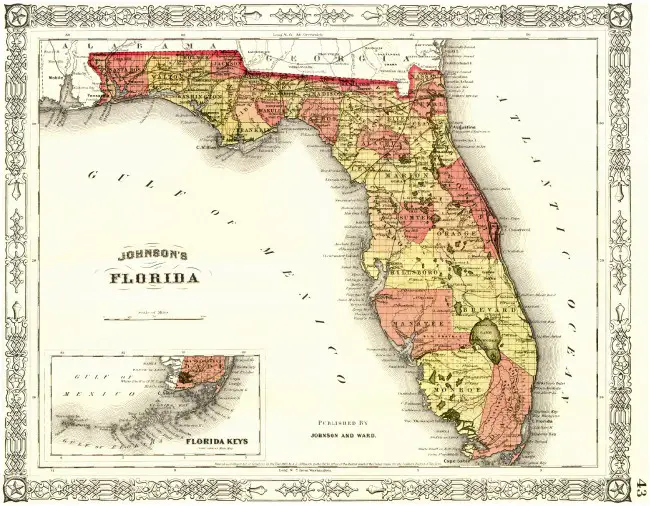
The U.S. Department of Justice on Monday approved the Legislature’s plans for new congressional, House and Senate districts Monday, paving the way for the state to begin using the maps in preparation for the November elections.
However, the pre-clearance does not halt a challenge to the state congressional districts under Florida’s anti-gerrymandering Fair Districts standards, and it doesn’t bar legal action against the maps under the federal Voting Rights Act.
In a two-paragraph letter dated Monday, Assistant Attorney General Thomas Perez said Attorney General Eric Holder would not “interpose any objection” to the new maps created in the once-a-decade redistricting process. That is the agency’s boilerplate language for pre-clearance.
Under the VRA, Florida must get Justice Department approval for any changes in elections laws affecting Collier, Hardee, Hendry, Hillsborough and Monroe counties because of a history of discrimination against racial or language minorities in those countries.
The approval from the federal government marks the second legal milestone the maps have passed in as many weeks. The Florida Supreme Court approved a second draft of the Senate map on Friday, after rejecting an earlier version in March. Justices approved the House map in the earlier decision, but have yet to hear any challenges to the congressional plan. And a Leon County judge declined to set aside the state’s new congressional maps Monday, saying opponents of the plans had not proven that the Legislature violated new anti-gerrymandering standards in the once-a-decade redistricting process.
Senate leaders said the preclearance for this year’s map came earlier than in other redistricting years.
“One of our foremost goals during this redistricting cycle was to conduct the process in a manner that would give both the voters and candidates time to become familiar with the new districts,” Senate President Mike Haridopolos, said in a statement. “With the completion of the review process for these redistricting plans today, I am proud to say that we accomplished that goal.”
The decision allows county supervisors to move forward with planning for the November elections using the new maps. However, the congressional plans could still be blocked under the Fair Districts amendment dealing with lines for the state delegation.
Unlike the state legislative maps, the congressional plans are not immediately sent to the Supreme Court for the justices’ approval. But a group of voters backed by the Florida Democratic Party and a coalition of voting-rights groups had challenged the map in court. The ruling by Circuit Court Judge Terry Lewis Monday did not fully settle the issues in the case. His ruling only dealt with a request by lawyers for a coalition of voting rights groups and a group of voters backed by the Florida Democratic Party to throw out the maps based on undisputed facts. But Lewis said many of the facts are still in dispute.
And he rejected a request by critics of the maps to issue an injunction that would prevent the state from using the new lines until he could rule on the merits of the case.
“Without a finding that the map as draw is unconstitutional, I do not have the authority to replace it with another map while the case is pending,” Lewis wrote.
He also noted that simply going back to the 2002 redistricting map, which both critics and supporters of the state’s new plan say was politically gerrymandered, would present problems of its own.
The case is the first ruling on congressional map under the Fair Districts constitutional amendments approved by the voters in November 2010. It is separate from the Supreme Court’s consideration of the legislative maps, though the justices could be asked to review Lewis’ ruling and any final decision on the redistricting plan if a trial goes forward.
In one of the most-watched districts of the congressional case — the sprawling Northeast Florida district represented by Democratic Congresswoman Corrine Brown — Lewis did concede that the lines do not gel with many of the standards set out in the Fair Districts standards.
‘It is visually not compact, bizarrely shaped, and does not follow traditional political boundaries as it winds from Jacksonville to Orlando,” Lewis wrote.
But he said opponents had not yet made the case that the district could have been redrawn to better respect those standards while still providing black voters in the area the opportunity to elect a candidate of their choice.
In all, Lewis brushed aside challenges that could have affected more than 20 districts across the state, often saying that he was convinced that the facts about whether those lines violated the law were still in dispute.
In a statement issued late Monday, Democratic Party Executive Director Scott Arceneaux said Democrats were considering their next steps.
“We remain concerned about elements of the map and we will continue to evaluate our legal options moving forward,” Arceneaux said.
Meanwhile, some Cuban-American lawmakers have threatened to file a lawsuit under the Voting Rights Act challenging the Legislature’s decision not to draw a fourth state Senate seat with a heavy Hispanic majority in Miami-Dade County. That legal action could move forward despite Monday’s decisions by the Justice Department and the circuit court.
–Brandon Larrabee, News Service of Florida




























Jack says
I think that Florida has done a great thing to set up districts geographically instead of to help a certain political party. I hope that other states follow their lead.